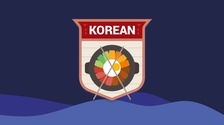Why Hangul Is One of the World’s Most Logical Writing Systems
Hangul may look unfamiliar at first, but it’s actually one of the most logical writing systems in the world.
The biggest reason is that Hangul is phonetic—you write words exactly as they sound.
There are no silent letters and very few confusing spelling rules, unlike English.
Once you learn the basic characters, you can start reading real Korean words immediately.
Hangul was designed scientifically.
Consonants are shaped after the position of the tongue,
and vowels follow a simple line-and-dot system.
Because of this structure, many learners can read Korean after just a few hours or days of practice.
Korean pronunciation patterns are also quite consistent.
There aren’t many exceptions, which helps beginners learn faster and with more confidence.
Even though the language itself may seem difficult,
Hangul gives learners a clear and logical starting point—
making Korean much more approachable than people expect.

